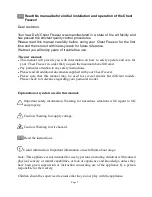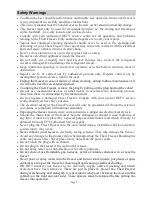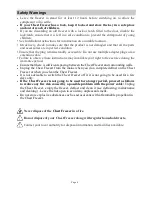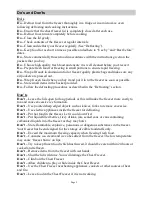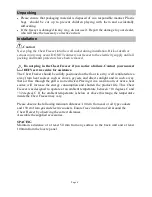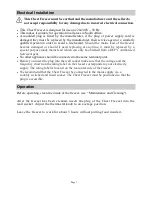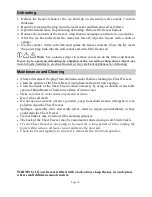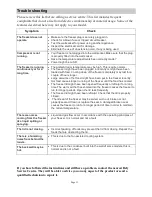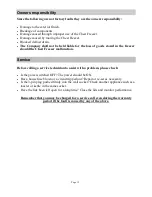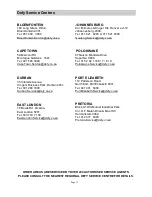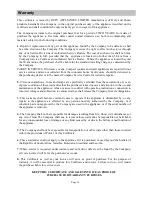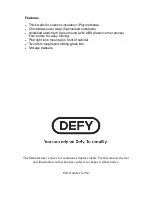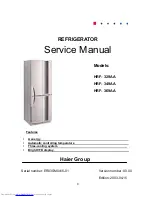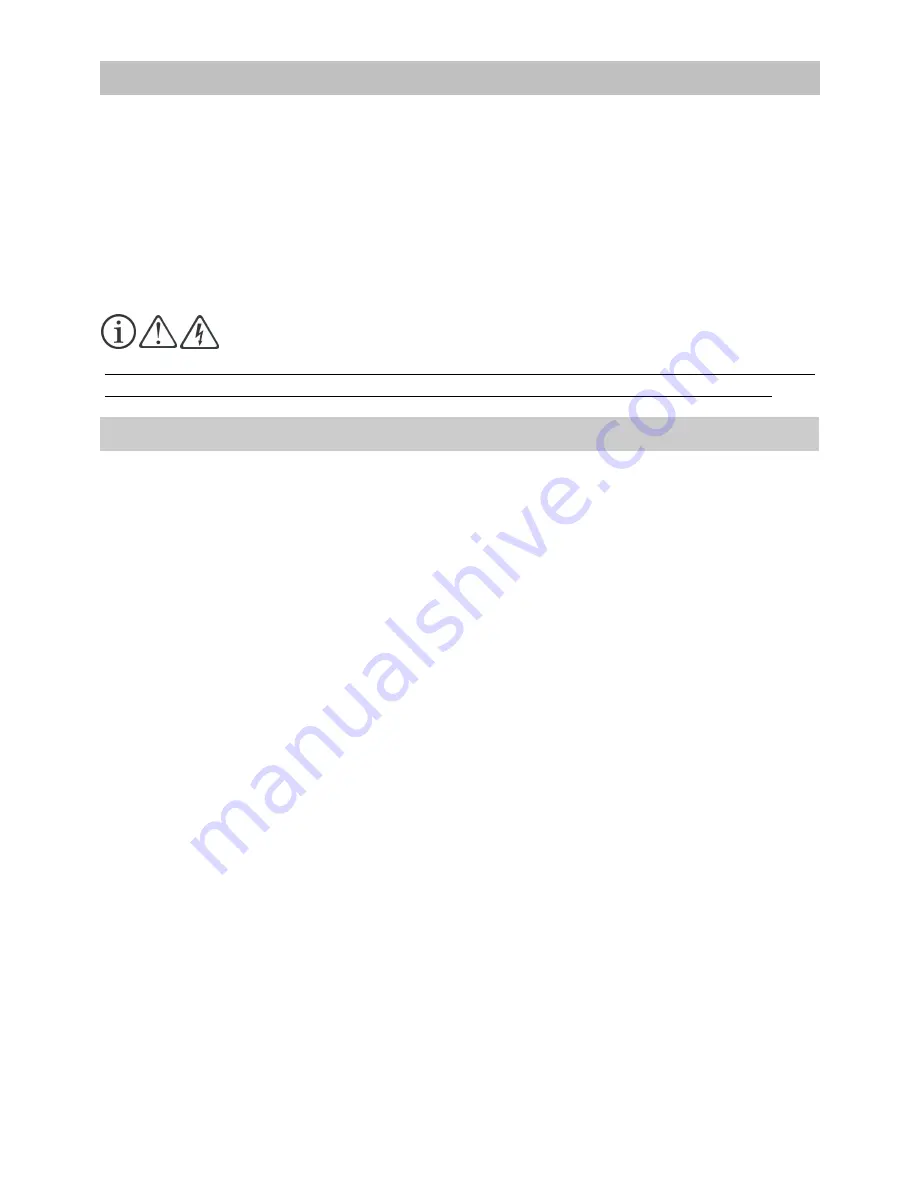
Page 10
Defrosting
WARNING: If your freezer is fitted with a lock, always keep the key in a safe place
where small children cannot reach it.
1. Defrost the freezer whenever the ice build up on the inside wall exceeds 5 mm in
thickness.
2. Begin by removing the plug from the wall socket and then proceed as follows:
3. Open the lid and leave it open during defrosting. Remove the freezer baskets.
4. Remove the contents of the freezer, wrap them in newspaper and store in a cool place.
5. After the ice has melted and the water has run-off, wipe the freezer with a cloth or
sponge.
6. Dry the cabinet with a soft cloth and replace the freezer contents. Close the lid, insert
the power plug back into the wall socket and switch the freezer on.
Note:
Use a plastic scraper to remove excess ice on the frame and baskets.
Never try to speed up defrosting by chipping at the ice with a sharp object. Never use
metal objects, hairdryers, electrical heaters or any electrical appliances for defrosting.
Maintenance and Cleaning
•
Always disconnect the plug from the mains socket before cleaning the Chest Freezer.
•
Clean the outside of the Chest Freezer using lukewarm water and a sponge.
•
Clean the inside of the Chest Freezer when necessary by using a solution of one table
spoon of Bicarbonate of Soda to two litres of warm water.
•
Make sure that no water enters any electrical items.
•
Dry with a soft cloth .
•
Do not use pot scorer's, abrasive powders, soap, household cleaner, detergent or wax
polish to clean the Chest Freezer.
•
Spillages, especially citric and acidic juices, must be wiped up immediately as they
could stain the Chest Freezer.
•
Freezer baskets may be removed for cleaning purposes.
•
The back of the Chest Freezer may be vacuumed or dusted using a soft bristle brush.
•
If your Chest freezer is not going to be used for a long period of time, unplug the
power cable, remove all food, clean it and leave the door ajar.
•
Check the lid seal regularly to ensure it is clean and free from food particles.


